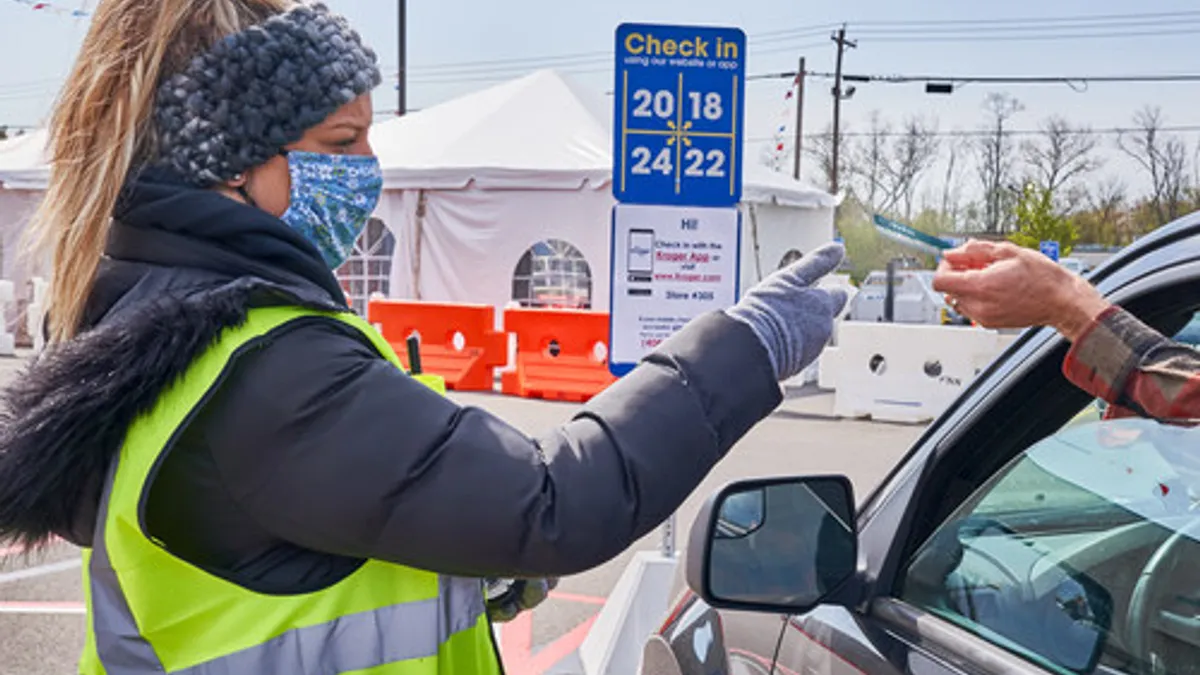Dive Brief:
- Grocery shoppers in the United States spent $5.9 billion on delivery and pickup orders during November, up 3.6% from the $5.7 billion they spent on those services in August, according to the most recent grocery shopping survey conducted by Brick Meets Click and Mercatus.
- These services account for 73% of the $8.1 billion total spent on grocery e-commerce orders for the month. The number of monthly households using online grocery services increased 3% in November compared with August, to 38.7 million, and the average number of orders they placed during the month hit 1.62 — a 2% increase.
- Online grocery sales have plateaued in recent months following a rapid ascent that kicked off in March and hit its apex in the middle of the year due to the novel coronavirus pandemic.
Dive Insight:
Consumers pivoted quickly to online grocery channels when the pandemic broke out, and while orders for delivery or pickup have slowed somewhat, the latest figures make it clear that interest in grocery e-commerce remains sharply elevated.
To put the numbers in perspective, grocery delivery and pickup accounted for just $1.2 billion in sales in August 2019, Brick Meets Click and Mercatus reported. Even when orders involving common-carrier delivery services like FedEx, United Parcel Service and the United States Postal Service are taken into account, grocery e-commerce was only at $2 billion at that time.
The increase in pickup and delivery sales between August and November of this year is mostly attributable to a 5% increase in order volume, according to the survey. All told, consumers placed 62.7 million monthly orders to either collect at a store or receive via a grocer’s own delivery service or a third-party e-commerce provider like Instacart or Shipt.
The continued strong interest by consumers in purchasing groceries online has been showing up in grocers’ financial results. Retailers like Kroger and Albertsons have continued to report rapid growth in digital sales even as increases in their overall revenue has begun to decelerate.
Consumer satisfaction with grocery e-commerce is also on the rise. The proportion of monthly active online grocery shoppers who said they are extremely or very likely to patronize the service they most recently used again within 30 days rose eight points in November compared with August, to 83%, the data shows. The figure is up 40 points over March when widespread out-of-stocks and a shortage of delivery slots tested grocers’ ability to handle booming online demand.
The survey, which tallied responses from 2,067 adults that were collected between Nov. 11-14, also signals that the percentage of first-time online grocery shoppers is on the decline. In November, 17% of participants in the research were new to grocery e-commerce, down from 23% in August.
"As the online customer mix skews to the more experienced users, retailers will experience headwinds for growth in their delivery and pickup offers," Brick Meets Click Partner David Bishop said in a statement. "This challenge emphasizes the importance of leveraging tactics designed to boost usage and spending per order with existing customers."











